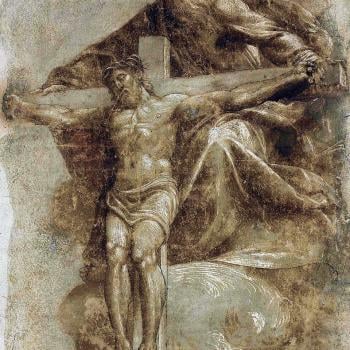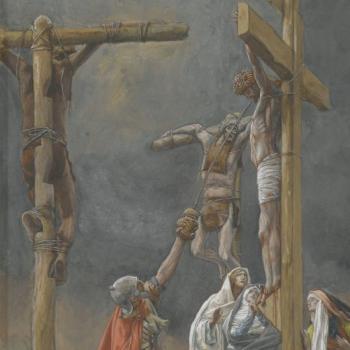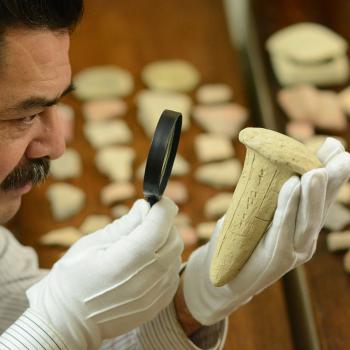
Jemar Tisby’s excellent article in The Washington Post impresses upon those of us who are white Evangelicals the constant need for soul-searching, repentance, and bridge-building across the growing ethnic divide in American society.
Five years ago, on August 9th, Michael Brown was fatally shot. Tisby writes about “How Ferguson widened an enormous rift between black Christians and white evangelicals.” Tisby is certainly not the first person to address this subject, nor will he be the last. Still, he develops his argument in a manner that is timely, honest, and balanced. All of us who are white and Evangelical would serve the movement well by taking his argument to heart, that is, if our mission really is to be ethnically diverse in a manner that is truly inclusive and equitable. Here are several lines from Tisby’s article:
Black Christians like me and many others began a “quiet exodus” from white evangelical congregations and organizations. We distanced ourselves both relationally and ideologically from a brand of Christianity that seemed to revel in whiteness.
Now, after this quiet exodus, we find ourselves wandering in a sort of wilderness. Some are rediscovering the black church tradition and moving in that direction for healing and solidarity. Others, often by necessity, have remained in white evangelical spaces but with a new degree of caution. Some of us still don’t have a faith community to call home.
The word “evangelical” is broad and messy, used academically to define people who especially emphasize a relationship with Jesus and prioritize evangelism. It is sometimes difficult to define exactly who and in what sense one is an evangelical. But a few characteristics are clear.
Brown and Ferguson highlighted that when it comes to some parts of conservative evangelicalism, whiteness is not a bug, it’s a feature.
Those in my white Evangelical circles who would roll their eyes in reading the article or dismiss it out of hand prove Tisby’s point that whiteness is a feature of various sectors of conservative Evangelicalism. We must continue on a recurring basis to search our souls, analyze our white affective lenses through which we view the world, and address the structures that cater to the white Evangelical power base if we wish to bridge the growing chasm between white Evangelicals and Black Christians, Mexican and Hispanic Christians, as well as others.
Regarding affective lenses, I encourage readers to invest time in researching the work of Marquette University psychologist Nakia Gordon. Here is a TedTalk that she co-led engaging how we feel history, including violence and brutality, as well as a co-authored article that reflects her scholarly trajectory titled “On the Outside Looking In: Distress and Sympathy for Ethnic Victims of Violence by Out-Group Members.” I had the privilege of co-leading a workshop with Prof. Gordon at a recent faith and science retreat involving scientists and seminary professors. The talk focused on the physiological and psychological importance of feeling states and their bearing on theological, ecclesial and broader cultural engagement, including matters pertaining to racialization. Speaking of theology, I also encourage my fellow Evangelicals to engage the forthcoming volume, Evangelical Theologies of Liberation and Justice, co-edited by my colleagues Mae Cannon and Andrea Smith. I am grateful for the opportunity to have contributed to this important theological endeavor.
All too often, whiteness shapes Evangelical theology and the movement. It is not simply what we say, but what we don’t say that speaks volumes on our positions on race. When Evangelicals remain silent over President Trump’s racist and violent rhetoric, when we fail to listen to the heart cries of African Americans over their rightful fears concerning “driving while black,” when we speak out over pro-life stances concerning the beginning of life and end of life yet fail to address the structures that impact negatively the poor and ethnic minorities between the beginning and end of life, and when we don’t make every effort to diversify our leadership within churches and other institutions, we are fostering white hegemony in our movement. The “evangel,” from which we derive the name of our movement, is all about proclaiming the good news of Jesus Christ to people of all tongues, tribes, and nations, and inviting people to become members of Jesus’ kingdom community. In this community, there is to be no division between Jew and Gentile, male and female, slave and free, for all are one in Christ Jesus (Galatians 3:28).
If we who are white Evangelicals wish to heal the growing rift between Black Christians and our movement, we must become vigilant to do constant soul-searching, keenly analyze the white affective lenses through which we view the world, and rigorously challenge the structures that cater to the white power base in our movement and beyond.












